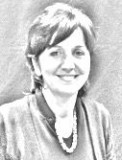HealthManagement, Volume 15 - Issue 1, 2015
What are the main areas of EOS Imaging’s business interest?
Bringing solutions to musculoskeletal radiology. Bone imaging has not seen a lot of innovation since the invention of x-ray more than a century ago, and bone imaging will not go much longer with just plain x-ray and recumbent CT.
EOS, as a platform, offers pure radiographic imaging, low dose, and the capacity to image the whole body and extract 3D information. From this platform derives a lot of applications that are surgeon-, therapist-, prescriber- and orthopaedistcentred – all the specialists that use the clinical information that we provide.
What are your key products?
The key product is the EOS platform for 2D/3D low dose imaging, into which we are adding constantly innovation and peripheral products. We are pushing new products for instance in planning software for orthopaedics, based on the unique EOS information derived from the capacity to do 3D weight-bearing imaging and have clinical data embedded in the EOS 3D image.
If at all, where do you experience major difficulties?
We don’t face difficulties. We’re just executing
a very ambitious plan, which is to bring a technology that did not exist ten years ago to become a worldwide gold standard in bone imaging. That’s obviously challenging, but it’s a great experience and we’re getting there.
We started in Western Europe, inFrance, w e h ave e xpanded o ur o perations to the U.S., and we are present in Asia and will soon be in Latin America.
The t echnology as it goes w orldwide is more and more considered as a gold standard not only in paediatrics but in all bone imaging, with a lot of momentum being built on spine pathologies and joint pathologies, hip and knee, and all associated imaging procedures.
Where do you see the opportunities?
When you have disruptive technology you cannot go in a single area of the world. We have a large opportunity if you look at the number of sites worldwide that do medium to large volumes of orthopaedic surgeries, and all of them should be equipped with an EOS. The market opportunity is huge – potentially 12,000 sites.
How important is management, leadership and cross-departmental collaboration?
We haven’t produced equipment just for radiology. Radiology serves prescribers, the end customers that the radiology exam is made for, together with the patients. We are in the unique position in that we have a dedicated specialty offering for those prescribers, whether they are chiropractors, rheumatologists or orthopaedic surgeons, and we help radiologists serve those prescribers with the best offering, not just a generalist of fering, which provides them with the right data for the patient.
Our experience, in more than a hundred sites that we have worldwide, is that by bringing EOS in an institution, the partnership between the radiology department and the orthopaedists or rheumatologists is really building up around EOS.
We designed the equipment with orthopaedists and radiologists. We added the third dimension, the large size of exams, because we knew that the actual skeleton exam requires a large size. We reduced the dose, because we knew that bone imaging is where you have to put the most dose. It really makes that fit between radiology and orthopaedics happen.
What is EOS Imaging’s story?
I met georges Charpak, a Nobel prizewinner in physics, in the late 1990s, and he had started a company with a great technology for measuring radiation. That company really restarted in the mid 2000s around that, because we f ound w ith a s mall t eam o f M Ds and engineers that Charpak’s technology could actually help us do better bone radiographs. So we put it at work in what is now EOS by bringing the detector technology and bringing more technology from outside academic partners for 3D and that’s how it all came about. It really was a meeting of us, engineers, Charpak, a radiologist and a surgeon.
What is your top management tip?
Keep your 360o degree radar going on at all times.
If you had not chosen this career path, what would you have become?
When I was ten I wanted to be an archaeologist. I think today, if I were to look into it again, I might choose medicine. I’m absolutely fascinated by the value brought by medicine.
What is your favourite quotation?
It’s one quotation, which I use a lot for EOS. It’s a quotation by a French philosopher. The first half of the quotation is easy and usual: “To understand the whole you have to understand the parts.” Then it goes: “But to understand one part, you have to understand the whole.” And that’s all EOS is about. If you want to understand lumbar back pain, you might have to look globally at your patient and not just be trying to reduce your thinking to a very local area.


